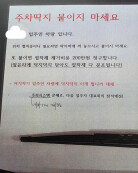5 Years After the Sept. 19 Agreement
5 Years After the Sept. 19 Agreement
Posted September. 20, 2010 14:33,
Sunday marked the fifth anniversary of the September 19 joint agreement on assuring the North Korean governments safety and economic aid in return for Pyongyang giving up its nuclear weapons program. Hopes ran high back then that the Norths nuclear crisis would be resolved and inter-Korean relations would improve seamlessly.
The trajectory of inter-Korean ties over the past five years, however, runs counter to the terms of the agreement. The North has yet to cease its nuclear weapons development while bilateral relations have reached their lowest point. Pyongyang rattled Seoul through the 2008 killing of a South Korean tourist at the Norths Mount Kumgang resort, a threat to close the inter-Korean industrial complex in the Norths border city of Kaesong, and the cutoff of communications between the two sides. Then came the Norths sinking of the South Korean naval ship Cheonan. Internally, the North is taking steps to pass on its dictatorial leadership to the third generation.
Pyongyangs promise to give up nuclear weapons was a lie, and was a pledge it had no intent of keeping in the first place. Advocating military-first politics and vowing to establish itself as a powerful and great nation by 2012, the North conducted its first nuclear test on the pretext of a protest against the freezing of its accounts with Banco Delta Asia and a second to counter U.N. Security Council sanctions. The North is now proposing nuclear arms reduction to the international community, thus publicly confessing to the completion of its nuclear weapons development.
At this point, there is virtually no chance of Pyongyang giving up its nuclear weapons. It has no intent to transform itself into a normal country through reform and opening. Nevertheless, the North has recently sent signs of friendly overtures, including an offer to hold reunions of separated Korean families, a request for rice aid, an offer for working-level military talks, and a review of setting up dormitories at the Kaesong Industrial Complex. The North even mentioned the resumption of the six-party nuclear talks. These, however, are merely tactics meant to dodge global sanctions against Pyongyang and overcome its economic hardship resulting from stalled inter-Korean ties.
Despite this, voices in South Korea have hurriedly suggested massive economic aid, a change in Seouls policy toward Pyongyang, and an exit strategy from the Cheonan sinking, citing a shift in Pyongyangs stance. The Kaesong complex, from which South Korea considered a complete withdrawal, is poised to return to the situation before the Cheonan sinking. In South Korean political circles, a special envoy to North Korea is frequently discussed, with Special Affairs Minister Lee Jae-oh saying, When an opportunity comes, someone will need to visit.
The North has a million tons of rice in military stockpiles but lets its people starve. Even with this rice inventory, it asked Seoul for rice aid rather than using the stockpile first. Who on earth is this rice aid meant to help? Even after killing dozens of South Korean servicemen through a torpedo attack, the North has yet to admit to its wrongdoing, let alone make an apology. Why must the South send a special envoy and seek an exit strategy from the sinking, as if trying to beg the North? South Korea needs to reflect on whether it has too easily forgotten the lessons learned through the sinking only six months after the incident and the fifth anniversary of the September 19 agreement.







